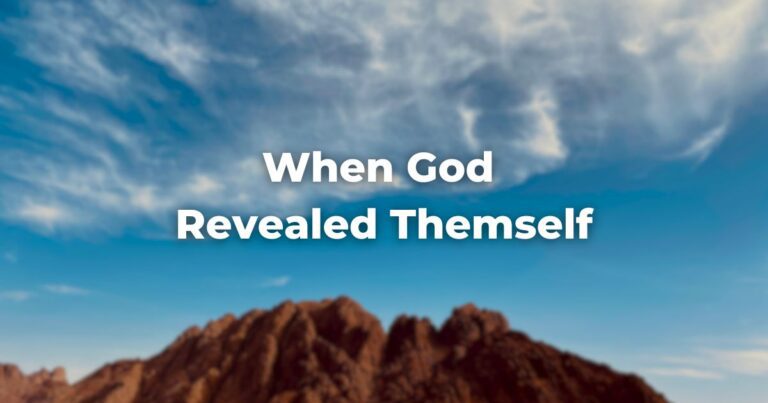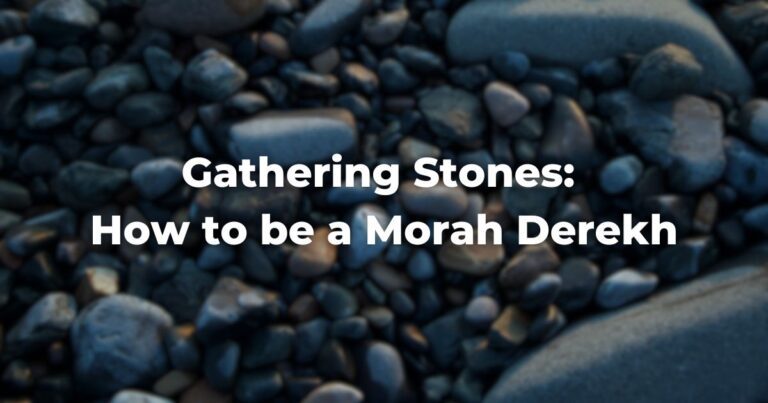Simḥat Torah literally means “the joy of TorahRefers to the first five books of the Hebrew Bible, the Tanakh, also called the Five Books of Moses, Pentateuch or the Hebrew equivalent, Humash. This is also called the Written Torah. The term may also refer to teachings that expound on Jewish tradition. Read more” and is the special name given to what would otherwise be the second day of Sh’mini Atzeret in the Diaspora, the day on which the annual cycle of Torah readings begins and ends.
Background
There is no biblical reference to this holiday because it came into existence after the close of the canon, and it is not even mentioned in the TalmudReferring to one of two collections, the Jerusalem and Babylonian Talmuds, edited in the 6th century, that contains hundreds of years of commentary, discussion, and exploration of the ideas in the Mishnah. One could describe it as Mishnah + Gemara = Talmud Read more.
Since Simḥat Torah was a relatively late addition to the calendar, most liturgical texts continue to refer to the day in exactly the same terms as Sh’mini Atzeret, as:
יוֹם הַשְׁמִינִי חַג הַעֲָצֶרֶת הָזֶה.
Yom ha-sh’mini ḥag ha-atzeret ha-zeh.
This eighth day of festival observance.
It also explains why in Israel, where there is only one day of each scriptural holiday other than Rosh Hashanah, the celebration connected in the Diaspora with Simḥat Torah and the Yizkor Service both take place on the one day of Sh’mini Atzeret.
Evening Service
The celebration of Simḥat Torah begins in the evening.
Find information for candle lighting on Simḥat Torah here.
The Evening Service in the synagogue follows the usual format for festival evenings.
After the Full Kaddish is recited at the end of the service, however, worshipers remove the Torah scrolls from the Ark and make a series of circuits, called hakkafot, around the sanctuary.
Hakkafot
These circuits are joyous in nature and many express their joy at the completion of yet another cycle of Torah readings by singing and dancing around the sanctuary with the Torah.
There are seven hakkafot so as to give as many people as possible a chance to carry and rejoice with the Torah scrolls.
A different prayer of introduction is chanted at the outset of each of the seven hakkafot, but it is customary before the scrolls are even taken from the Ark to recite a special hymn called Attah Horeita La-da·at, a collection of biblical verses. This can be found in Siddur Lev Shalem, p. 402.
In most congregations, each verse of the hymn is recited aloud by the cantor or prayer leader and then repeated by the congregation. In others, different members of the congregation take turns reciting the verses aloud, and they are then repeated by the congregation.
The atmosphere is upbeat and lively in a way that is truly unique as the congregation openly expresses its love for the Torah and for Jewish tradition.
Evening Torah Reading
After the hakkafot, all but one of the scrolls are returned to the Ark and a brief passage from the last parashah, V’Zot HaBerachah (Deuteronomy 33), of the Torah, divided into three aliyot, is read from that scroll.
This is the only time during the year when the Torah is read formally in the evening as part of the synagogue service.
Morning Services (including Hakkafot)
The celebration continues the next morning.
Until the Torah is taken from the Ark, the service follows the format of the usual festival Morning Service. In congregations in which the kohanim ascend to the bimah to recite the Priestly Blessing, however, they do so during the Morning Service on Simḥat Torah rather than during the Musaf Service.
Once again, the Attah Horeita La-da·at hymn is recited.
Once again, all the scrolls are removed from the Ark and another seven hakkafot are made around the sanctuary, just as on the evening before.
Morning Torah Reading (and special customs)
This time, however, when most of the scrolls are returned to the Ark, three are kept out.
The end of Deuteronomy is read from the first scroll, the beginning of Genesis from the second, and the maftir reading from the Book of Numbers from the third.
It is customary for everyone, or almost everybody, present to have an aliyah to the Torah on Simhat Torah (comment of the Rema to SA Oraḥ Ḥayyim 669:1).
In some synagogues, this is done by having several simultaneous Torah readings in order to make time for everyone to have a personal aliyah. In other synagogues, there is one central reading of the Torah and large groups of people are called forward for each aliyah.
While the practice of calling up many people at once for an aliyah is not without its detractors (see Rabbi Avram Reisner’s responsum on joint aliyot, written for the Committee on Jewish Law and Standard in 1992), it also has its supporters and it appears to have become the dominant practice in many contemporary congregations.
It is also customary to call all the children forward for an aliyah to the Torah.
Since they are not yet old enough to have an aliyah of their own, it is customary for one adult, sometimes the rabbi, to lead them in reciting the blessings.
A large tallit is held over the children’s heads and, after the final Torah blessings are recited, the blessing that Jacob gave his grandchildren (as found at Genesis 48:15–16) is recited as well to express the congregation’s prayers for its children.
Some congregations have beautifully embellished this custom by designing a special covering to hold over the children for this aliyah.
Ending and Beginning the Torah
The last aliyot to the Torah are special honors and are given to people whom the community wishes especially to honor.
The first is called the Bridegroom of the Torah or the Bride of the Torah (the ḥatan torah or kallat torah) and is the individual honored with the final aliyah of the entire Torah reading cycle.
The second is called the Bridegroom of Genesis or the Bride of Genesis (the ḥatan b’reishit or kallat b’reishit) and is the individual honored with the first aliyah of the new Torah reading cycle.
There is a special, very elaborate formula that is recited to call these honorees forward. These honors are often further embellished by calling the honorees forward with great fanfare, by allowing them to be accompanied by their families, or even by escorting them to the bimah under an actual wedding canopy or a large prayer shawl.
It is customary for the Torah reader to pause before chanting the final verse of the entire Torah, as is done when chanting the final verse of each of the five books of the Torah, to give the congregation the opportunity to rise and chant the final words out loud, thus ensuring that no one miss the climactic last few words of the annual cycle of Torah readings.
The reader then repeats the final words and the entire congregation joins in the recitation of:
חֲזַק חֲזַק וְנִתְּחַזֵּק.
Hazak, ḥazak, v’nit·ḥazzeik.
May we be strong, may we be strong, and may we strengthen one another.
It is also customary when reciting the opening verses of the Torah, from its beginning, Genesis 1:1, through Genesis 2:3, to have the congregation participate by pausing at the end of each of the days of creation so that the congregation may recite the concluding words out loud first. These words are then repeated by the reader.
Beyond the Torah Reading
The balance of the liturgy follows the normal format for festivals.
The warm ambience that prevails in the synagogue on Simḥat Torah reflects the spirit of a close and loving community that has made the journey together through the long holiday season and that, as a result of that journey, has come closer to God and to each other.
The series of penitential prayers called Taḥanun is omitted from the daily service through the end of the month of Tishrei.
Adapted with permission from The Observant Life.
Authors
-

-

The Observant Life: The Wisdom of Conservative Judaism for Contemporary Jews distills a century of thoughtful inquiry into the most profound of all Jewish questions: how to suffuse life with timeless values, how to remain loyal to the covenant that binds the Jewish people and the God of Israel, and how to embrace the law while retaining an abiding sense of fidelity to one’s own moral path in life.
Written in a multiplicity of voices inspired by a common vision, the authors of The Observant Life explain what it means in the ultimate sense to live a Jewish life, and to live it honestly, morally, and purposefully. The work is a comprehensive guide to life in the 21st Century. Chapters on Jewish rituals including prayer, holiday, life cycle events and Jewish ethics such as citizenship, slander, taxes, wills, the courts, the work place and so much more.
View all posts




